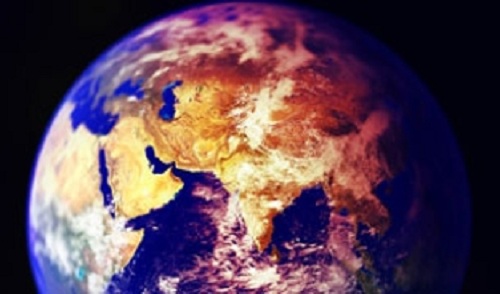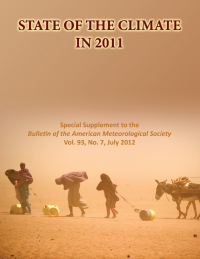This is a reprint of a news release posted by the UK's Met Office on July 10, 2012
![]()

This latest science is featured in a companion piece to The State of the Climate in 2011 report, which is led by the National Oceanographic and Atmospheric Administration (NOAA) in the US and is published as part of the Bulletin of the American Meteorological Society (BAMS).

The new report, Explaining Extreme Events of 2011 from a Climate Perspective, includes contributions from the Met Office and many other research institutions from around the world. For the first time it includes so-called 'climate attribution studies', looking at six key weather events shortly after they have happened.
Dr Peter Stott, Head of Climate Monitoring and Attribution at the Met Office and one of the editors of the report, said: "The research here pushes the boundaries of attribution science in quantifying, so soon after the weather events in question, how climate change has altered the odds of their occurrence.
"While we didn't find evidence that climate change has affected the odds of all the extreme weather events we looked at, we did see that some events were significantly more likely. Overall we're seeing that human influence is having a marked impact on some types of extreme weather."
Key findings from the attributions supplement include:
The BAMS State of the Climate in 2011 Report also looks at a large range of key climate indicators to assess year-to-year changes.
Dr Kate Willett, a Met Office Climate Monitoring and Attribution scientist and lead editor of the Global Climate chapter of the State of the Climate report, said: "We are in the golden age of satellite technology - we can see our planet changing in more detail than ever before.
"As a result, we see evidence far beyond changing temperatures and have observed intricate links in our climate system - these changes can differ radically from region to region, and impact our daily lives in many different ways."
Examples highlighted by the report include how heavy rainfall in Australia during 2011 exacerbated wildfires - we often associate excessive fires with unusually hot and dry periods. In fact, this rainfall boosted vegetation growth, creating a large fuel bed in the dry season which led to widespread and damaging fires.
Polar stratospheric temperatures were particularly cool through 2011, allowing clouds to build up more than normal. These high cold clouds cause chemical depletion of ozone by substances (e.g. CFC's), contributing to record low levels of ozone over the north and south poles. However, there is no evidence to suggest these record low levels will persist as they have recovered in the past.
Climate Monitoring and Attribution
NOTE: On the same day that the Met Office posted the above news release, the US National Oceanic and Atmospheric Administration (NOAA) posted the article, Back-to-back La Niñas cooled globe and influenced extreme weather in 2011 which summarizes The State of the Climate in 2011 report in more detail than the above.
Posted by John Hartz on Monday, 16 July, 2012
 |
The Skeptical Science website by Skeptical Science is licensed under a Creative Commons Attribution 3.0 Unported License. |